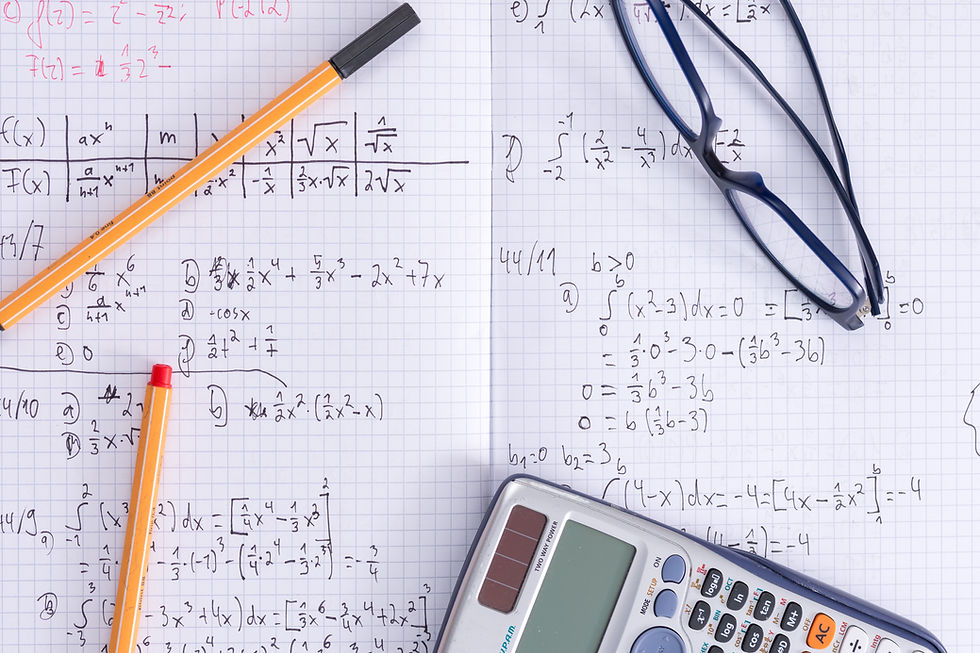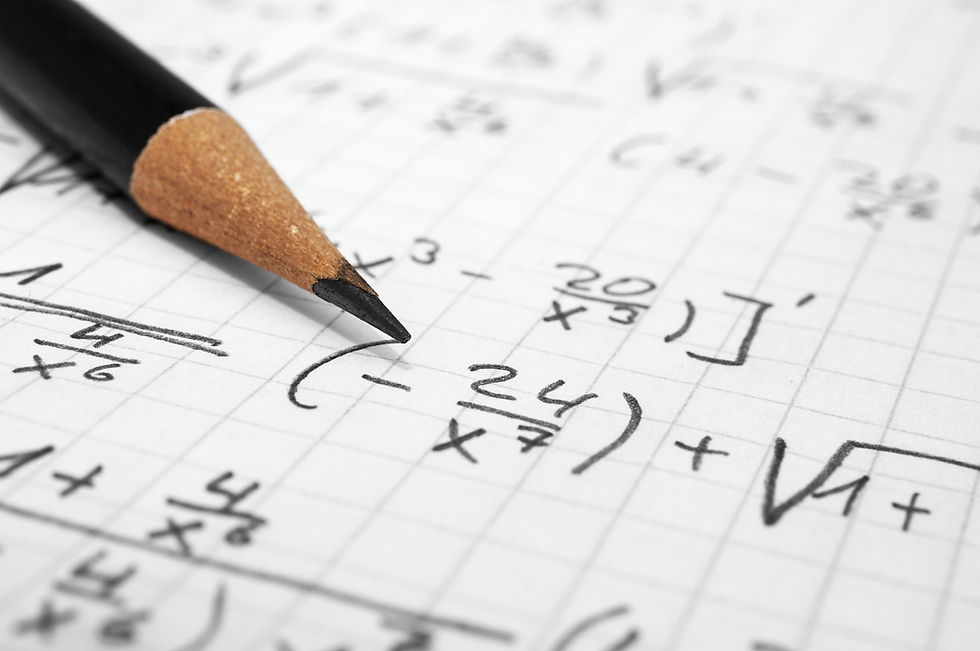Five More Ways CAOS Robotics has Used Mathematics
- CAOS Robotics
- Oct 25, 2024
- 4 min read
Updated: Apr 17

By Lucy C.
Math is integral to CAOS Robotics. From simple concepts like using a ruler to more intricate concepts in the field of calculus, math has been crucial to successfully designing robots like the Picky Eater. Gnorp, the robot we entered for last year's STEAM-themed challenge, was no exception. Below are five more ways CAOS Robotics has used mathematics!
Function Analysis

The above data was collected from the Ilite Drivetrain Simulator, a software that simulated movement characteristics of our robot's drivetrain based on the information we inputted about the electrical and mechanical components of our drivetrain.
The above data simulates the movement characteristics of our final iteration of the drivetrain, which contained 435 rpm motors and 1:1 gearing (i.e. gears are equally sized). According to the simulation data, this design would allow the drivetrain to reach a maximum speed of roughly 6 ft/s, which was faster than motors we simulated that were below 435 rpm. Additionally, motors below 435 rpm had lower acceleration (green line), meaning that they could not speed up or slow down fast enough when needed.
In other words, by being able to analyze graphical data, we were able to predict the most optimal drivetrain design without spending extra time and money testing and engineering multiple different designs.
Factor of Safety

Factor of safety is the ratio of a system's capacity, or the amount of stress it could handle, to the system's demand, or the amount it must actually handle. In other words, factor of safety measures whether or not a design is strong enough for a particular task. In this case, we were trying to calculate whether our hang mechanism was strong enough to hold the weight of the robot while being suspended on a rigging.
We were able to calculate that the arm could handle 65 megapascals of tension and that it would need to handle 2.897*10^-1 MPa of tension. Therefore, with our factor of safety formula, we completed the following calculation:

Put into context, a factor of safety less than one indicates that a design is not strong enough to handle the stress, since its capacity is less than the demand. Since our factor was well above one, we were able to confirm that our arm was strong enough to perform the hang!
Coordinate Geometry
You can never have a FIRST competition without the autonomous period! Knowing that our robot would not have a human driver to detect and avoid obstacles and ensure the robot stays within the field, we knew we had to strategically model and coordinate the robot's pathfinding to ensure it would not collide with any obstacle regions. With the help of basic coordinate geometry, we were able to simplify large objects in our playing field into geometric shapes, modelling the ideal path of our robot with a Bezier curve.

One of our earlier pathfinding models, the above graph simplifies the the robot, the trusses, and the layout of our field with rectangles and uses a Bezier spline (blue curve) to model its path to the "wing," a diagonal line taped on the field where pixels could be placed for intaking.
We later created a pathfinding algorithm more specifically designed for obstacle avoidance:

This model also uses a spline and graphs and simplifies obstacle regions as circles and the trusses as rectangles. We modelled the pathfinding so that the robot would closely hug but safely avoid obstacle regions.
Vectors

Vectors are quantities that contain both direction and magnitude. In our case, the "direction" was the path we wanted our robot to take during its autonomous period, and the "magnitude" was the amount of power required by the wheels to take this path.
Our robot's pathfinding was essentially a vector comprised of different vectors. Each of the vectors above were drawn and scaled to represent the direction of our paths and the "power" it would require our wheels to embark on these paths. The blue vector is in line with our ideal path, while the green path represents the direction the robot would normally take by taking into account the total amount of force of each individual wheel. As you can see, the robot would not normally follow a straight, ideal path, thus contributing to heading error. We then added and scaled a corrective vector, the red arrow, that would contain enough power to re-route our robot so that it may follow the ideal path. By manipulating these vectors, we were able to scale and adjust our wheels to ensure they followed this path.
Distance and Orientation Calculations

While mounting our camera, we had to take into account range, or the distance the camera is from an object; bearing, or the angle from the camera to the target object; and yaw; or the angle at which our target object would be tilted around the vertical axis. In this case, our target was the April Tags attached to the backdrops where we would drop pixels. We wanted to ensure our camera was oriented so that it could actually detect the April Tag and thus allow the robot to make necessary adjustments to its position to ensure it was driven straight toward the backdrop. With this information, we were able to build a mount that would orient our camera so that it could detect the April Tags on the backdrop.
A world without math is a world without robotics. This was what we learned while designing Gnorp. Without mathematics, we would not have been able to make optimal design choices, model and coordinate our pathfinding, and ensure Gnorp was strong enough to hang from a rigging.


Comments